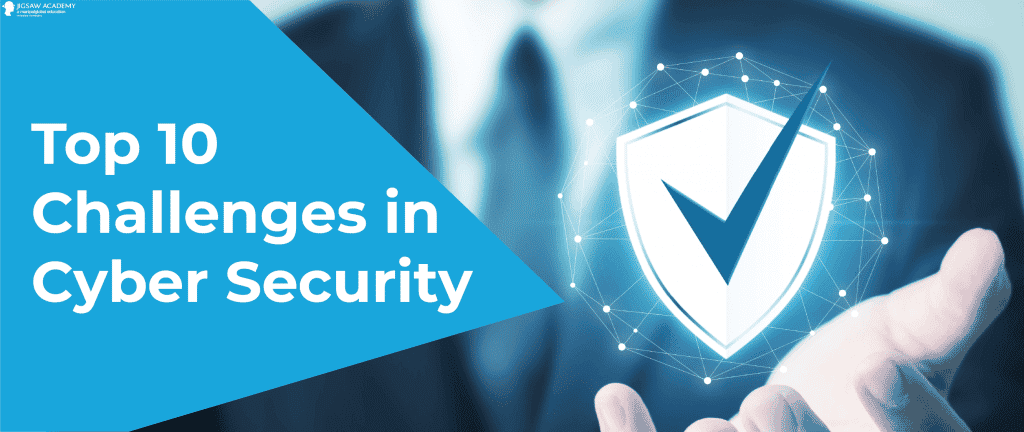Threats to cybersecurity have been around since the time computers and the internet were invented. In fact, the first cyberattack, Morris Worm, occurred in the year 1988. Although the program was not intended to cause any harm, it ended up damaging close to 6,000 computers. At the time, that included around 10% of the internet. Almost 30 years down the line, if you compute the costs of repairing the damage, a comparable incident would work out to between $201,000 and $2.9 million dollars.
Hacking and Data Breaches Cost the World Trillions of Dollars Each Year
Fast forward to the current era of the Internet of Things and of exponential growth in the extent to which we rely on the internet. Cybersecurity had become a far more significant issue. According to statistics released by Cybersecurity Ventures, the world will face the biggest challenges to cybersecurity in the next couple of decades.
Experts are projecting that beginning in 2021, losses from cyberattacks could cost an incredible $6 trillion each year with cybercriminals attempting to hack a computer every 39 seconds. The potential extent of the problem is mind-boggling. Large corporate organizations, medium and small-scale businesses, and individuals, all are in constant danger from the threat of cyberattacks.
Here are some of the biggest challenges to cybersecurity faced by the world today, as described by the expert developers at Hackedu.
Widespread Use of the Internet of Things (IoT) Technology
Simply explained, the Internet of Things (IoT) is a complex network of millions, possibly billions, of linked servers and computers. Internet connectivity makes it possible for devices to share, store, and retrieve information of all kinds. Anyone owning a computer or a mobile device uses it to communicate and exchange data not just with other entities, but also with the devices within their own network. For instance, connecting with smartwatches, smart TVs, garage doors, and even, refrigerators.
Experts estimate that the development of the IoT is as yet restricted because of the insufficient speeds of 4G networks. With the advances of 5G in 2020, there could be around 40 million devices across the world connected to the internet. The availability of these greater speeds will significantly increase the dependence that people have on high-speed connectivity, and thus, give hackers quicker access to their target networks.
Reliance on Mobile Devices
People use their mobile devices wherever they go, and often don’t pay attention to how they use passwords and Personally Identifiable Information (PII). Using Wi-Fi networks in public areas that have weak firewalls and other cybersecurity solutions adds to the threat of data breaches. Hackers particularly target mobile phones because they typically lack antivirus and anti-malware software that PCs and Macs are equipped with. On the other hand, computers are typically used in offices and residences where a secure and reliable Virtual Private Network (VPN) can offer some protection against hacking.
Lack of Robust Cybersecurity Policies Within Organizations
Professionals dedicated to resolving cybersecurity challenges identify human error as the most critical issue. Even the most secure networks are vulnerable when employees overlook security protocols and make easily avoidable mistakes. While companies make the necessary investments in security measures and install sophisticated solutions and systems, hackers are often successful because of errors.
Employees ignoring directives such as the use of robust passwords is one of the key reasons why security solutions fail. Check out this article on Proofpoint that explains how 99% of cyber-attacks are successful because of human interaction. Cybercriminals are known to take advantage of the human need for instant gratification, enhanced social status, and the excitement of earning rewards, discounts, and offers for free merchandise or services.
Advanced Phishing Strategies
Phishing is easily one of the most significant challenges to cybersecurity. As users learn how to identify fraudulent emails, hackers remain ahead by developing diverse and highly-sophisticated methods to trick people into revealing passwords and other details. Cybercriminals are known to use strategies like sending communications that mimic emails from high-authority organizations and customer service at financial organizations. Installation of malware and hijacking browsers for bitcoin mining is often the objective of phishing attacks. Oftentimes, the end target is not the frontline person whose cell phone or laptop has been hacked.
Cost Cutting by Way of BYOD Policies
Small businesses wishing to lower operational costs are typically open to permitting employees to use their own electronic devices for work. The option of hiring employees from remote locations provides companies flexibility but also adds to the risk of hacking, data breaches, and malware. Although modern-day businesses have advanced security systems, multiple devices and remote workers make it challenging to institute appropriate processes and protocols. Maintaining cybersecurity while keeping costs low can present a problem.
Work From Home (WFH) Processes
The COVID-19 situation has forced many businesses to close physical offices and encourage employees to work from home. Although the availability of the internet has made it possible for many businesses to continue functioning, the new processes have added to the challenges to cybersecurity. Employees who are working remotely for the first time in their careers are more vulnerable to hacking via social engineering, phishing, and other cybersecurity threats.
Programmers are using a lack of technical knowledge to target such workers who often face problems in keeping up with their newly-assigned roles just as this post on ZNet warns. People struggling with technical issues tend to visit unverified sites and forums for information and directions. In the search for answers, they unwittingly reveal passwords or vulnerabilities.
Cybercrimes, data breaches, hacking, malware, phishing, and denial of service attacks are possibly only the first of the cyber threats that will potentially emerge in the next few decades. As hackers hone their skills, and adapt and evolve more advanced strategies, the need for property cybersecurity measures becomes all the more critical. A good step in the right direction is to recognize the threats so that all entities using the internet are able to stay protected with the right security measures.




